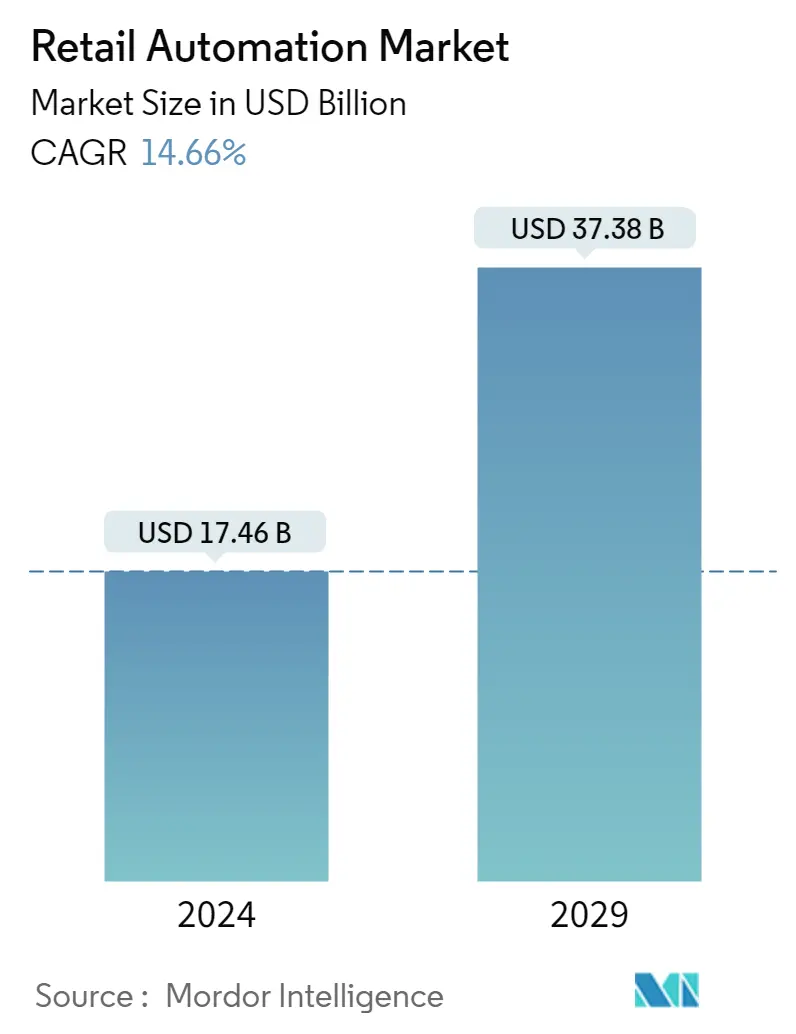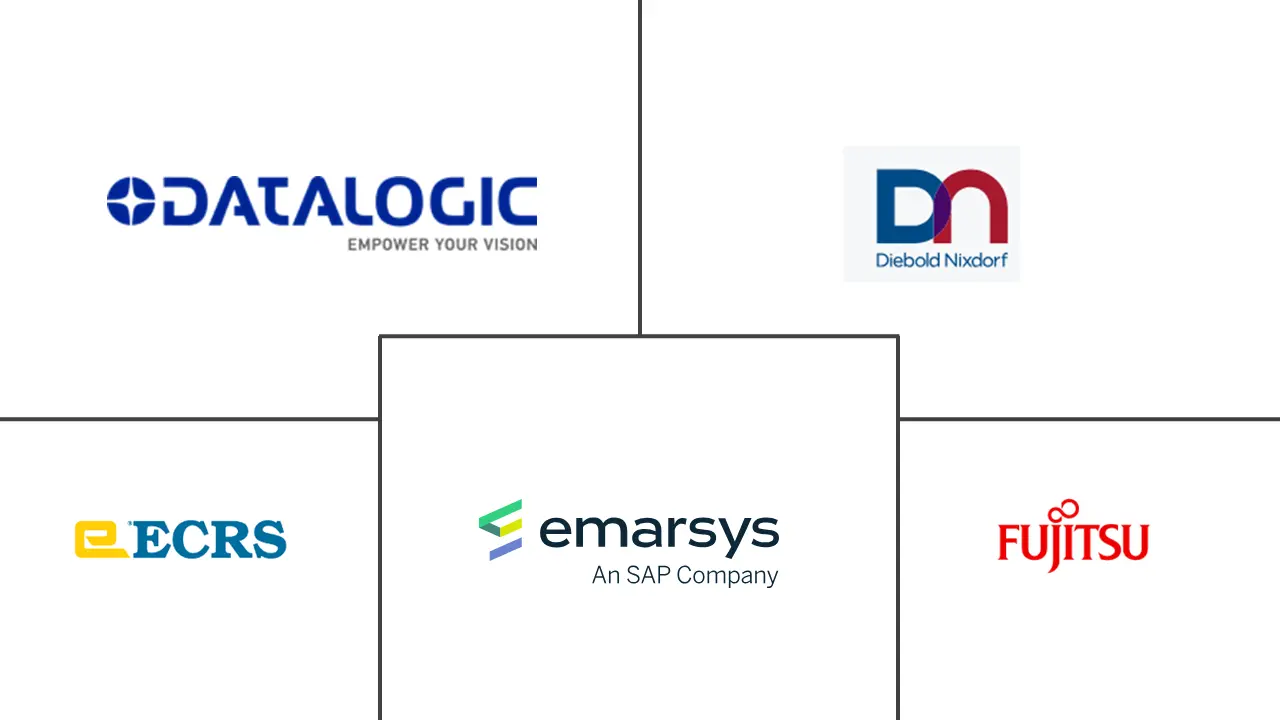Market Size of Retail Automation Industry

| Study Period | 2019 - 2029 |
| Market Size (2024) | USD 17.46 Billion |
| Market Size (2029) | USD 37.38 Billion |
| CAGR (2024 - 2029) | 14.66 % |
| Fastest Growing Market | Asia Pacific |
| Largest Market | North America |
Major Players
*Disclaimer: Major Players sorted in no particular order |
Need a report that reflects how COVID-19 has impacted this market and its growth?
Retail Automation Market Analysis
The Retail Automation Market size is estimated at USD 17.46 billion in 2024, and is expected to reach USD 37.38 billion by 2029, growing at a CAGR of 14.66% during the forecast period (2024-2029).
- Retailers have recently faced challenges as the technological revolution has gained attention and adoption significantly. Such technologies and innovations have been reshaping the behavior of consumers and their way of collaborating and communicating pre - and post-sales. Features, such as convenience and transparency, provided by automation have been pushing retailers to adapt and upgrade their PoS systems. Furthermore, due to their cost-effectiveness, the demand for PoS systems has significantly risen among small retail stores.
- Retail automation assists with handling triggering reactions, interacting with other digital systems, and handling data. Cheaper operational risk, lower costs, a better customer experience, and increased productivity are just a few advantages of using this software.
- The requirement for human intervention can be minimized by using automation technologies to carry out repetitive operations like bookkeeping. The firm operates smoothly, efficiently, and consistently owing to automation, which can determine the shortest and most precise way to do the operation and repeat the process. With retail automation, shoppers may browse products using a touchscreen interface, and transactions take less time. The ability to choose the product of customers choosing and proceed to payment with a credit or debit card is made possible by retail automation.
- The growth further influences the market for machine learning capabilities incorporated into retail automation. Robotic process automation (RPA) uses artificial intelligence (AI) to provide better business insights and data integrity. Additionally, the retail automation market benefits from rising urbanization, a shift in lifestyle, an increase in expenditures, and higher consumer spending.
- The COVID-19 pandemic led retail businesses to take precautionary measures, which resulted in the closure of several outlets. Owing to this, retailers and leading luxury brands faced short-term challenges across sustained revenues, health and safety, supply chain management, labor shortages, and pricing, to name a few. With governments worldwide enforcing quarantines to curb the transmission of COVID-19, people staying back at home led to increased online shopping and bulk buying of goods. This resulted in massive supply chain stress. Thus, supply chain players among retailers deployed AI and smart analytics to ensure resilience.
